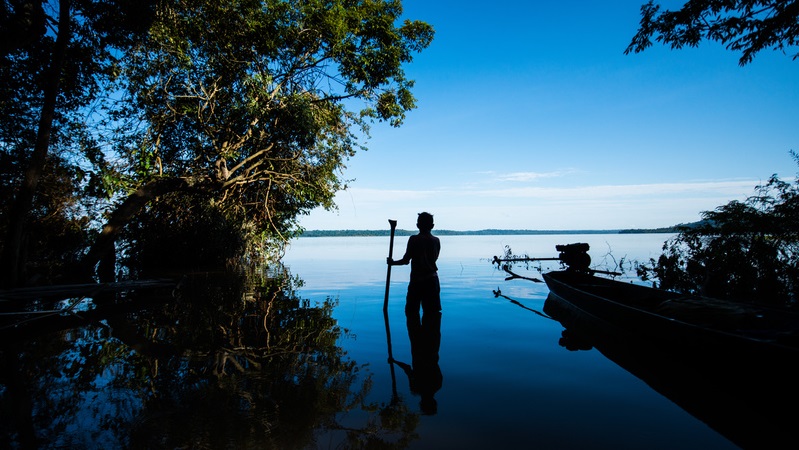In theory, forest carbon offsets are a simple idea. Companies pay for a tonne of carbon reduced through forest protection and restoration to counter emissions they are continuing to emit, or have emitted in the past.
It sounds like a a win-win. A company gets a step closer to telling its investors and consumers it’s reached net zero, and critical forest protection gets an injection of cash.
These days, forests generate a lot of credits: they represent one in three carbon credits sold through Verra, the largest of the voluntary carbon market administrators.
But this market is plagued with problems. It routinely inflates its climate impact, diverts money to middlemen who cream off profits, and exploits Indigenous communities. High-profile investigations have exposed widespread malpractice.
G20 climate talks fail to deliver emission cuts despite leadership pleas
That scrutiny should not stop, because the most dangerous element of exploiting forests for carbon credits still exists: businesses buy credits as a shortcut to meet their net zero targets while continuing to pump out emissions.
Forest offsets, no matter how incredible trees’ role in tackling climate change is, are simply not equivalent to cutting emissions: storing carbon in trees isn’t always a long-term bet to keep carbon out of the atmosphere.
Deforestation, decay, or fire (as we have recently seen in Canada) can release it back into the atmosphere within hours. The only sure way to slow down climate change and meet net zero goals is to keep coal, oil and gas in the ground.
To understand the risks of forest carbon credits being sold as offsets, take a look at Guyana: a story of zombie carbon credits, dubious accounting, and a cosy relationship between offset schemes and the oil industry.
Guyana’s story begins with a calculated overstatement of the risk of deforestation. A report written by McKinsey in 2009 claimed that the country’s forests could disappear at a rate of more than 4% per year, gone entirely within 25 years.
Independent assessments show that the true rate of deforestation was actually around 0.2%. But the inflated McKinsey estimate had already established an attention-grabbing baseline number that would set the project up to report an impressive – but false – impact.
In a deal set up with the Norwegian government, Guyana received four payments totalling nearly $200 million for ‘avoided deforestation’. Recently, Guyana sold 33.5 million carbon credits for reducing forest loss during 2016 and 2020, this time under an ART-TREEs crediting scheme.
But analysis of the methodology used shows that, as with previous payments to Guyana, the ‘emissions reductions’ may be largely fictitious. According to one analysis, some 84% of these credits were created by accounting manipulations allowed under the scheme.
Independent evidence also suggests deforestation actually rose during the crediting period. Data from the independent Global Forest Watch shows that forest loss in four of the five years was higher than in all the years the analysis looked at.
Germany plans to keep funding new gas projects overseas despite pledge
Meanwhile, the Amerindian Peoples Association, which defends the rights of Guyanese Indigenous Peoples, said that there hadn’t been proper consultation about the programme with people with ancestral rights to land.
Astonishingly, this project – which allowed deforestation to rise, and more carbon to be released into the atmosphere – was used to greenwash oil drilling off Guyana’s coast. The Hess Corporation, which has a 30% stake in a deal exploiting oil from Guyana’s recently-opened Starbroek offshore oil block, announced its intention to buy $750 million of credits generated by Guyana forest projects to offset its emissions.
But in comparison to the 33 million tonnes of carbon supposedly captured by the scheme so far, the oilfield could, over its lifetime, release up to 5.5 billion tonnes of carbon. That’s 166 times as much.
A race to the bottom of offset standards permitted the creation of millions of ‘zombie carbon credits’ used to justify oil drilling.
UN climate fund suspends project in Nicaragua over human rights concerns
But can we blame forest nations for looking to exploit a promising source of finance? For decades emerging economies dense in essential biodiversity have faced promises of critical finance from the global north to protect and restore rainforests – the lungs of the earth and the only tried and tested method for removing carbon from the atmosphere.
A $711 billion a year funding gap currently exists for nature protection and restoration, with $200 billion of that needing to be new sources of finance outside of repurposing existing subsidies that could be channelled in better directions.
In the run up to Cop28 we’re seeing countries and continents rich in carbon storing biodiversity come together – through the Amazon Summit, Africa Climate Summit and Three Basins Summit all before COP28 – to renegotiate what those financing solutions should look like.
Now is the time to turn away from the small piece of the funding pie failing carbon markets represent and focus energy on real solutions that really have forests, people and the climate at their heart.
On its website, ART TREES says credits created under its HFLD methodology “constitute additional climate action” and “incentivises jurisdictions to protect intact forests since guarding the carbon sequesterd in these forests is essential to meeting the goals of the Paris Agreement”
Joe Eisen is the executive director of the Rainforest Foundation UK
This story was was edited on August 21, 2023, to correct the role of the Amerindian Peoples Association as a defender of indigenous rights in Guyana, but not a legal representative of them.
